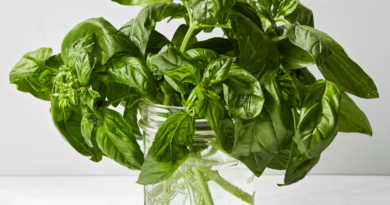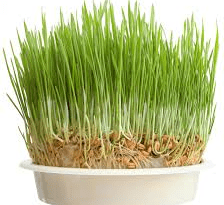The Beans Inflorescence: Economic Importance, Uses, and By-Products
The Beans Inflorescence, scientifically known as Phaseolus vulgaris, refers to the arrangement and structure of flowers on the plant. Beans belong to the legume family Fabaceae and exhibit a characteristic inflorescence that plays a crucial role in their reproductive cycle.
Beans typically produce their flowers in clusters along a central axis known as the peduncle. This type of inflorescence is classified as a raceme, where flowers are borne on short stalks called pedicels, arranged along the main stem. The raceme inflorescence of beans allows for sequential and continuous flowering, maximizing the chances of successful pollination and seed production.
Each flower in the bean inflorescence consists of several distinct parts essential for reproduction. At the base of the flower, there are usually five green sepals collectively known as the calyx, which protect the developing flower bud. Above the sepals are the petals, which can vary in color depending on the bean variety but generally have a typical papilionaceous structure found in legume flowers. The petals consist of an upper petal called the banner, two lateral petals known as wings, and two lower petals fused to form a boat-shaped structure called the keel. These petals collectively form a structure that facilitates pollination by attracting pollinators such as bees.
Within the flower, there are essential reproductive organs. The stamens, male reproductive structures, consist of filament stalks topped with anther sacs containing pollen grains. The pistil, the female reproductive organ, consists of the stigma, style, and ovary. The stigma is the receptive surface for pollen grains, and the style connects it to the ovary, which contains ovules. Successful pollination occurs when pollen grains land on the stigma and travel down the style to fertilize the ovules within the ovary.
After fertilization, the ovary develops into a pod that encloses and protects the developing seeds. The pod undergoes maturation, turning from green to a more rigid and often colored structure as the seeds inside reach maturity.
Understanding the inflorescence of beans is crucial for comprehending their reproductive strategies and agricultural practices. Efficient pollination, aided by the structural arrangement of flowers in the raceme inflorescence, ensures the production of viable seeds essential for crop yield. The sequential flowering pattern also contributes to the resilience and productivity of bean plants in various environmental conditions.
In conclusion, the inflorescence of beans, characterized by a raceme arrangement of flowers along a central axis, is integral to their reproductive cycle. It facilitates efficient pollination, seed development, and eventual fruit formation, ensuring the continuation of the bean plant species and supporting agricultural production worldwide.
The Economic Importance and Uses of Beans Inflorescence

1. Pollination: Beans inflorescence attracts pollinators such as bees, which are essential for the production of beans and other crops. This helps increase agricultural yield and biodiversity.
2. Seed Production: The flowers of bean plants develop into pods that contain seeds. These seeds are used for planting new crops, ensuring a continuous supply of beans.
3. Food Source: Bean flowers lead to the production of beans, which are a staple food in many cultures, providing essential nutrients like protein, fiber, vitamins, and minerals.
4. Animal Feed: Bean plants, including their flowers, are used as fodder for livestock, contributing to the animal husbandry sector.
5. Nitrogen Fixation: Beans, as legumes, have a symbiotic relationship with nitrogen-fixing bacteria in their root nodules. This process enriches the soil with nitrogen, reducing the need for chemical fertilizers.
6. Crop Rotation: Beans are often used in crop rotation systems to improve soil health and fertility, which benefits subsequent crops.
7. Cover Crops: Bean plants can be grown as cover crops to prevent soil erosion, retain moisture, and suppress weeds.
8. Biofuel Production: Bean plant residues, including flowers, can be converted into biofuels, providing a renewable energy source.
9. Pharmaceutical Uses: Certain compounds in beans inflorescence are researched for their potential medicinal properties, such as antioxidants and anti-inflammatory agents.
10. Biodegradable Products: Bean plant materials, including flowers, can be used to produce biodegradable plastics and packaging materials, reducing environmental impact.
11. Horticultural Uses: Beans inflorescence is used in ornamental horticulture for its aesthetic appeal in gardens and landscaping.
12. Cultural Significance: Beans and their flowers have cultural and traditional importance in various societies, often featured in festivals and rituals.
13. Soil Improvement: The decomposition of bean plant residues, including flowers, adds organic matter to the soil, enhancing its structure and fertility.
14. Pest Control: Beans inflorescence can attract beneficial insects that prey on pests, providing natural pest control in agriculture.
15. Green Manure: Bean plants, including their flowers, are plowed back into the soil to improve its organic content and fertility.
16. Genetic Research: Bean flowers are used in genetic research to study plant breeding, hybridization, and trait inheritance.
17. Essential Oils: Extracts from beans inflorescence can be used to produce essential oils for use in aromatherapy and cosmetics.
18. Educational Uses: Beans inflorescence serves as a valuable teaching tool in botany and agriculture, helping students understand plant growth and reproduction.
Read Also: List of Diseases Ruminant Animals (Livestock) Get from Feeds and Water
The Products and By-products That Can Be Derived From Beans Inflorescence

1. Beans: The primary product, beans are harvested from the plant after the flowers have been pollinated and developed into pods.
2. Bean Flour: Beans can be ground into flour, which is used in baking and cooking to make bread, cakes, and other dishes.
3. Bean Sprouts: Bean seeds can be sprouted and used in salads and stir-fries, providing a nutritious and crunchy addition to meals.
4. Bean Oil: Oil can be extracted from beans for cooking, as well as for use in cosmetics and industrial applications.
5. Bean Meal: The by-product of oil extraction, bean meal is used as animal feed due to its high protein content.
6. Bean Paste: Beans can be processed into paste, which is used in various culinary applications, including sauces and spreads.
7. Tofu: Made from bean curd, tofu is a versatile protein-rich food used in many cuisines.
8. Tempeh: A fermented bean product, tempeh is used as a meat substitute in vegetarian and vegan diets.
9. Bean Milk: Beans can be processed into milk, providing a dairy-free alternative for lactose-intolerant individuals.
10. Bean Protein Isolate: Extracted from beans, this protein isolate is used in dietary supplements and food products to enhance protein content.
11. Biofertilizer: Bean plant residues, including flowers, can be composted to produce biofertilizer, enriching the soil.
12. Biochar: Bean plant biomass can be converted into biochar, a form of charcoal used to improve soil health and sequester carbon.
13. Biogas: Bean plant waste can be anaerobically digested to produce biogas, a renewable energy source.
14. Fiber: Bean plant fibers can be used to make biodegradable textiles and ropes.
15. Green Manure: Bean plants, including their flowers, are used as green manure to enhance soil fertility.
16. Medicinal Extracts: Certain compounds from beans inflorescence are extracted for their potential health benefits and used in pharmaceuticals.
17. Natural Dyes: Pigments from bean flowers can be used to produce natural dyes for fabrics and crafts.
Read Also: Guide on How to Care for and Grow Witchgrass (Panicum capillare ssp. Capillare)
Frequently Asked Questions (FAQ’s) About Beans Inflorescence

1. What is beans inflorescence?
Beans inflorescence refers to the flowering part of the bean plant, which includes the flowers and the structure that supports them.
2. Why is beans inflorescence important in agriculture?
It is crucial for pollination, leading to the production of bean pods and seeds, which are essential for crop yield.
3. Can beans inflorescence be used in animal feed?
Yes, bean plants, including their flowers, are used as fodder for livestock due to their nutritional value.
4. How does beans inflorescence contribute to soil fertility?
Bean plants fix nitrogen in the soil, improving its fertility and reducing the need for chemical fertilizers.
5. Are there any medicinal uses for beans inflorescence?
Yes, certain compounds in beans inflorescence are researched for their potential antioxidant and anti-inflammatory properties.
6. What products can be derived from beans inflorescence?
Products include beans, bean flour, bean sprouts, bean oil, bean meal, bean paste, tofu, tempeh, and bean milk.
7. How is bean oil extracted from beans?
Bean oil is extracted through pressing or solvent extraction processes, separating the oil from the bean solids.
8. Can beans inflorescence be used in biofuel production?
Yes, bean plant residues, including flowers, can be converted into biofuels, providing a renewable energy source.
9. What is the role of beans inflorescence in pest control?
It attracts beneficial insects that prey on pests, providing a natural form of pest control in agriculture.
10. How does beans inflorescence benefit crop rotation?
Beans improve soil health and fertility, making them ideal for use in crop rotation systems to benefit subsequent crops.
Read Also: How to Store Fresh Fruit, Vegetables and Herbs









